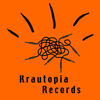
|
1. What is Krautrock?
|
The Term "Sauer-Kraut-Rock" was born with the release of the song "Mama Düül und ihre Sauerkrautband spielt auf" from Amon Düül’s 1969 album Psychedelic Underground. The British press had found a label for the type of music coming from Germany at the end of the 1960s and the beginning of the 1970s: sound-collages, twenty-five minute improvisations, technical minimalism, sound experiments, "weird German stuff" … "Strange Teutonic Sounds"….
The musical taste of the bands thus labelled was anything but uniform and consistent. Basically, there were two halves to the brain of Krautrock: one half was inspired by Anglo-American style, the other half was more experimental, autonomous and rebellious in nature (this posed a problem for many record labels):
The hard ’n heavy, West Coast, jazz or blues rock by groups like Kraan, Scorpions, Karthago, Grobschnitt, Jane, Curly Curve or Novalis was inspired mainly by an eclecticism that was more or less interesting, rather than innovation. The four bands Guru Guru, Embryo, Amon Düül (and later Amon Düül II) and Can are an exception. They created music located somewhere between Anglo-American influences and developed an independent, progressive style.
Guru Guru assumed the role of jazz-improvising "Spaßguerilla". Amon Düül II, with their flipped-out, crazy, yet innovative musical style (thanks to the distinctive voice of Renate Knaup) along with the trashy fantasy-poetry of their lyrics, became one of the most respected groups of the sub-genre "Krautrock-ROCK". Embryo helped to invent the genre known as "world music". Can became known as a band with modern classical training that played virtuoso music of the psychedelic avant-garde.
Along with the emerging of various varieties of Krautrock came a new and unique German folk music which was inspired by the lyrics and the music of medieval Europe. Folk groups who went back to the Middle Ages with their songs, which included the use of ancient instruments, were for example Ougenweide, Elster Silberflug or Sparifankal.
Apart from these groups, there are a few which shouldn’t be left unmentioned: the hippie-folk duo "Witthüser & Westrupp", who produced some of the strangest songs in the history of pop.
In the Krautrock genre, with its use of sound experiments and electronics, there are real gems like Cluster (Kluster), Harmonia, Conrad Schnitzler, Klaus Schulze, Faust, Ash Ra Tempel, Mythos, Popol Vuh, Kraftwerk, Neu!, La Düsseldorf, …
Musicians such as Florian Fricke (who studied in the class of Rudolf Hindemith, Paul Hindemith´s brother, and later founded "Popol Vuh") made use of the Moog Synthesizer for the first time outside the classical context and composed works that can be regarded as precursors of ambient music. The fact that many of these works were used as film soundtracks made the distribution and publication much less of an issue (Popol Vuh produced the soundtracks to most of the Werner Herzog films).
A great deal of creative fantasy went into the record covers, which also listed the legendary analogue synthesizers used (expensive then and still today), such as the Moog, EMS, Don Buchla, Arp, Serge or devices from the legendary "Synthesizerstudio Bonn", but also the strangest items, such as: "airpump, tin cans, and water" (Harald Klemm from the band Annexus Quam) or "potentiometers, generators and soundeffects" (Hellmuth Kolbe from the German/Dutch Band "Brainticket").
Electronic instruments were indeed used in the English and American pop music by 1968, however, for the most part they were used as a gimmick (e.g.: "Fifty Foot Hose") or were in the hands of the wrong musicians who didn’t realise their full potential to generate new sounds. Such musicians produced middle-of-the-road music for the popular consumption (e.g.: Pink Floyd after Syd Barret left the band). But there were a few impressive exceptions: "The Silver Apples", "The United States of America" or "Tonto’s Expanding Head Band". The new electronic instruments, however, only became a real dominant element with the German "Krauts". Their close relationship to innovative new music (Stockhausen, Musique concrétè) and totally unscrupulous radicalism in rejecting all conventions was of great significance.
In 2006, German television devoted much effort and airtime to the Krautrock era. WDR (West German Television) opened its archives for the production of a six-part series titled "Kraut und Rüben, über die Anfänge deutscher Rockmusik / Die ultimative Krautrock-Doku von Stefan Morawietz", which was screened from February 2 to March 16, 2006.
The most recent Kraut-Rock revival was during the middle of the 90’s. At this time, Julian Cope, the author of the "Krautrock Sampler" devoted his energies to a "Krautrock campaign". Since then, albums by NEU! have been been re-released. Other exciting re-issues and works by protagonists of the scene, for example, Irmin Schmidt or Roedelius, will be forthcoming …
The music referred to here, which was created ca. 1970 in Germany, is very diverse and follows a variety of concepts. Thus it is not surprising that a number of musicians vehemently reject the label "Krautrock" (e.g., Kraftwerk) — in spite of the fact that their work demonstrates characteristics of the genre. Perhaps the term has too many associations with the cliché of sweaty, long-haired rock guitarrists, which is misleading. Yet the period which saw the rise of the bands listed above and their music cannot be characterised better or more aptly than "The Krautrock Era". It was a time in which positive social and experimental music utopias grew out of the ruins of the past and, for a short time, blossomed and flourished.
Manfred Miersch, 04/2006. © Krautopia ®
"Just as revolutionary was the discomfiting
blend of deep seriousness and mad humour that most Krautrock Bands displayed
as they pirouetted at the interface of new technology and new consciousness
- who else but a Krautrocker would dare pass off the same piece of music at
different speeds as separate tracks , as Neu! did on their second album?"
(Mojo, UK, N°41, April 1997)
More on this subject: Kraut